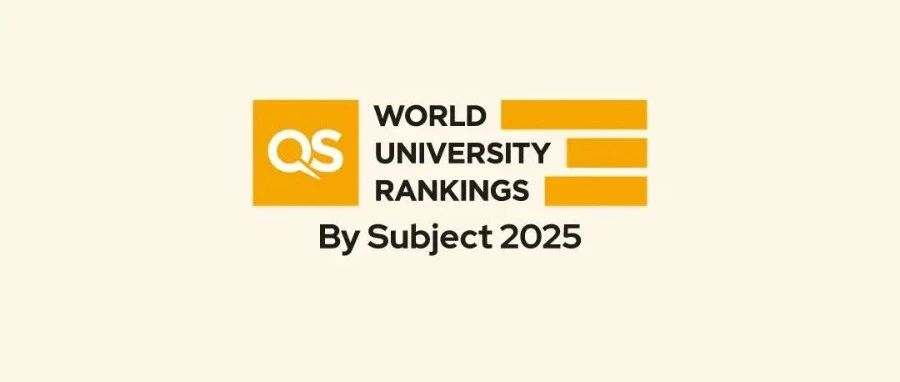麻省理工学院只有理工科最好吗?本科商学院也排名第二!
AI总结
文章讨论了麻省理工学院(MIT)在理工科领域的领先地位,并强调了其教育理念和招生标准。MIT注重学生的自主学习、动手能力和创新精神。对于中国学生申请MIT,文章指出动手实践经验至关重要。此外,MIT招生更看重与学校使命的契合、合作精神、风险承担能力和实践创造力。文章还提供了MIT招生准备的建议,包括学术背景和课外活动的选择。
关联问题:MIT教育理念是什么?如何准备MIT的申请?MIT看重哪些招生标准?
前文中,关于美国本科最好的大学是哪个,很有争议。但是,要说美国最好的理工领域( STEM )的学校是哪个,我相信没有人会质疑是麻省理工学院。虽然啊,人家麻省理工是一所综合性大学,并不是纯理工科学校,但是,一说到麻省理工,大部分人脑中第一反应还是理工科。我举一个简单的例子就能说明这学校强的不只是理工科。说到本科商学院,对美国本科有点了解的人都会想到宾夕法尼亚大学的沃顿商学院,这是本科商学院的最好的。那第二的是谁?
答案是,麻省理工的商学院!所以,人家理工科第一,商科第二。其他的学科我就不一一举例了。
中国学生申请美国本科,十个学生里,至少有八个申请或者想申请理工科,从美国大学返回的数据看,在美国就读的中国学生里,理工科学生占比接近半数。但是呢,因为麻省理工的申请难度和哈佛、普林斯顿、耶鲁、斯坦福是一个级别的(很多机构习惯把这五所大学划分为美国本科的 Super 5 ),每年录取大陆学生都是个位数,而且,以女生居多,所以,对学生家长来说,麻省理工真是:想说爱你,真不容易!
然而,就是这么一所高冷的学校,让人意想不到的是,官网上给的资源确实异常的丰富。不仅有关于学校招生、招生理念的详细介绍,甚至给出大量学生可以去参加的活动资源(虽然这些资源真不是随随便便就能参加的)。
MIT’s Educational Philosophy
原文地址: https://mitadmissions.org/discover/the-mit-education/mits-educational-philosophy/
MIT believes the best education occurs when students are self-motivated and engaged participants in a dynamic community of learners. We combine rigorous academic with a learning-by-doing approach .
Our guiding principles
Since the first classes were offered in a storage warehouse in Boston’s Back Bay, much has changed about the MIT education: electric lights have replaced oil lamps, mechanical engineering succeeded steam engineering, and students are no longer required to learn French and German in order to graduate. However, the MIT education has always been based on certain principles that guide us even today. These include:
l A broad and strong foundation in core fields of human knowledge (implemented by the General Institute Requirements)
l A deep and skillful training in a particular area of expertise (obtained through your majors and courses of study )
l A practical orientation toward solving real-world problems (produced by our research and innovation)
MIT also tends to attract and nurture unconventional thinkers. This is intentional: we seek students (and faculty) who have courage, creativity, and curiosity , place them in a resource-rich environment, and let them pursue their interests. And we believe these principles of our education empower our students long after they leave MIT.
理工科是中国学生申请最多的,也是被拒最多的!每年大量的高分娃子只能拿 UIUC 的理工科专业的录取,这其中有一个非常重要的原因是:中国学生大部分考试没问题,但是基本没有什么动手实践能力!申请工程专业的学生,没有接触过任何相关的东西,录取几率几乎为零。例如,大量中国学生从来没学过编程,然而,都想申请卡耐基梅隆大学的计算机专业。
理工科专业都强调有动手能力,而且需要有对应的经历。在申请理工科专业的时候,很多学校会多出 1-2 篇文书问对应的经历。所以,如果目标是申请理工科,一定要有配套的经历。
Preparing for MIT
Be yourself
原文地址: https://mitadmissions.org/apply/prepare/be-yourself/
The most important way to prepare for MIT is to focus on becoming your best self by pursuing your interests, your aptitudes, and your education . What you shouldn’t do is build your life, your education, and your expectations around the narrow goal of trying to get into MIT.
As our Dean Stu Schmill wrote:
In simple terms, we want students to pursue the things that interest them with energy and enthusiasm. We want students to make decisions that are educationally sound for them to best prepare them to succeed in college and beyond. We want students to challenge themselves appropriately in the areas that are most interesting to them. We want students to engage with their community in their pursuits. And, we want students who demonstrate strong ethnic character. In short, we want young people be to students and community members first, and applicants second.
Applying side ways
Look: we admit less than 10% of applicants. If you set your goal as being admitted to MIT, you are likely to be disappointed. If, however, you set your goals as learning a lot, developing a better sense of yourself, and being a positive influence on those around you, then you can succeed on your own terns and also be a better applicant to MIT.
You can think about this approach to preparing for college as applying sideways: one that encourages students to focus on becoming their best self, with the knowledge that it will also help them be a better applicant to colleges that are a good fit for them.
Climbing the mountain
We are about community so much because we don;t just admit individuals, we admit a class. It’s as if we’re choosing a 1,100-person team to climb a very interesting, fairly rugged mountain--together. We obviously want people who have the training, stamina, and passion for the climb. At the same time, we want each to add something useful or intriguing to the team, from a wonderful temperament or sense of humor to compelling personal experiences, to a wide range of individual gifts, talents, interests, and achievements. We are emphatically not looking for a batch of identical perfect climbers; we are looking for a richly varies term of capable people who will support, surprise, and inspire each other.
Preparing yourself for MIT, then, means doing two things:
1. Taking the time to really explore things that interst you, both inside and outside of school
2. Making sure you’re ready to do the work
下面内容是关于规划的,比较良心
What to do in high school
原文地址: https://mitadmissions.org/apply/prepare/highschool/
MIT receives diverse and interesting applications from students in every type of school: public, private, religious, charter, and home school. We understand that high schools have different offerings and families have different resources. It is our job as admissions officers to sift through that context and admit those students who are the best matched with MIT.
Academics
A strong academic foundation in high school contributes to your own development, improves your odds of getting into MIT, and helps you make the most of the Institute when you’re here. We recommend (please note that these are not requirements) that your high school years include the following:
l One year of high school physics
l One year of high school chemistry
l One year of high school biology
l Math, through calculus
l Two years of a foreign language
l Four years of English
l Two years of history and/or social sciences
What you take should be based on your interests and aptitudes: this is, you should focus on taking the most challenging courses available to you in the areas that interest you .
下面给出了几个可以参加的课外课程。
Additional Academic Enrichment
If your high school doesn’t offer courses that challenge you, you may want to explore other options, such as duel-enrollment opportunities at local colleges or enrollment in virtual high school options.
OpenCourseWare
MIT’s OpenCourseWare provides users with open access to the syllabi, lectures notes, course calendars, problem sets and solutions, exams, and even a selection of video lectures from courses representing 34 departments. If you need to narrow your options, you can check out OCW’s Highlights for High School, featuring courses selecting specifically to help high school students.
edX
In 2012, MIT and Harvard partnered to create edX, a massive open online course provider and online learning platform. Today edX has dozens of top universities across the globe providing courses in topics like business, electronics, music, and physics, including classes specifically for high school students.
Other resources
Khan Academy, founded by MIT alumnus Salman Khan, is also a useful online resource for introductions to different subjects.
There are more structured online environment that function more like traditional classrooms, with assigned homework, regular chat periods, an instructor, grades, and so forth. You may be able to get high school (and sometimes college) credit through these programs. Some of them include EPGY, CTYOnline, and Virtual High School.
Many of our students who are mathematically inclined have founded Art of Problem Solving (AoPS) an indispensable resource.
Extracurricular Activities
Some students feel so much pressure to get into the right college that they want to make sure they do everything right--down to their extracurricular activities. Fortunately, the only right answer is to to do what’s right for you--not what you think is right for us.
Choose your activities because they delight, intrigue, and challenge you , not because you think they’ll look impressive on your application. Go out of your way to find projects, activities, and experiences that stimulate your creativity and leadership, the connect you with peers and adults who bring out your best, and that please you so much that you don’t mind the work involved. Some students find room for many activities; others prefer to concentrate on just a few. Either way, the test for any extracurricular should be whether it makes you happy--whether it feels right for you.
College is not a costume party; you’re not supposed to come dressed as someone else. College is an intense, irreplaceable four-year opportunity to become more yourself than you’ve ever been. What you need to show us is that you’re ready to try.
Enrichment Opportunities
原文地址: https://mitadmissions.org/apply/prepare/enrichment/
If you are seriously interested in MIT, you probably think math and science are serious fun. We offer this abbreviated list of some remarkable competitions, fairs, summer programs, organizations, and websites that will challenge your imagination and powers of analysis, connect you with other young people who dare to enjoy science and math, and help you prepare for the rigor and excitement of MIT.
At MIT
MIT offers several selective residential summer programs for exceptional students.
We also offer MIT’s Educational Studies Program. ESP is an MIT student group that provides unique educational opportunities to junior high and high students: everything from multiweek courses (HSSP) to a single day educational extravaganza (SPALSH) and more!
International Science Olympiads and qualifying competitions
Every year, secondary school students from around the world complete in international Olympiad competitions in math and science. Ultimately, each country fields a team of its top four-to-six students in each field. Here’s a list of the major Olympiads that the United States competes in, along with their qualifying competitions: 下面列举的全是国际奥林匹克项目,不一一列举。具体可以参考关于活动准备的软文。
Science & Invention fairs/competitions
If you enjoy pure science research or the thrill of invention, you may want to set your sights on these fairs and competitions:
l Regeneron International Science & Engineering Fair
l Intel Science Talent Search
l Google Global Science Fair
l Davidson Fellows
l Lemelson-MIT InvenTeams
l International Youth Physicists’ Tournament
l Breakthrough Junior Challenge
Robotics
Many budding engineers have gotten their start tinkering with robots. You may enjoy these robotics programs:
l FIRST Robotics
l Zero Robotics
l BattleBots IQ
l VEX Robotics
l Botball
Build Awesome
Sometimes you have an idea for something really cool that you need to build. Looking for inspiration? Our students have found these places existing:
l MAKE
l Insturctables
l Adafruit
l Miters
Competitions by MIT students
Groups of talented MIT students frequently come together to put on special programs, including:
l The Harvard-MIT Mathematics Tournament
l MIT THINK, supporting and funding STEM projects developed by high school students
l MIT Model United Nations (MUN) Conference
上面这些活动,估计大部分学生只知道哈佛 - 麻省理工数学竞标赛。这个活动最近把普林斯顿大学也拉进来了。
Our Selection Process
原文地址: https://mitadmissions.org/apply/process/selection/
How it works
After you clink the submit button, it’s easy to feel like you application has entered a black hole. So what really happens between when you apply and when you receive your decision?
Once your application is complete, it will first be read by a senior admissions officer who will consider your application in a holistic manner, within its proper context. Strong applications will then be evaluated by additional admissions officers, who will summarize it for the Admissions Committee.
These summaries, along with your entire application, will then go to the selection committee, where multiple groups of different admissions staff and faculty members will weight in. At least a dozen people will significantly discuss and debate an application before it is placed in the admit pile.
Student-centered
This is all very intentional. The committee process ensures that every decision is correct in the context of the overall applicant pool, and that no one individual’s biases, preferences, or familiarity with a given case has any chance of swaying a decision unfairly.
Our process is a student-centered process, not a school- or region-centered process. This menas that we do not read your application along with other students from your school or region to compare you against each other; each applicant stands on their own. We have no quotas by school state, or region. You are not at any disadvantage if other excellent students from your school or area are also applying. We also do not consider legacy/alumni relations in our process.
At MIT, we try to be transparent as possible about our admissions process. If you have any questions, just ask.
You should really read these
There have been over 6,000 blog entries posted to MITAdmissions.org since the site betgan in 2004. That’s easily several books worth of tips and tricks, hints and hacks, meaculpas and hakuna matatas.
They’re all worth reading--especially the best of the Blogs--but there are few you really need to read. These are the blog entries that cut deep into our admissions process. Not only what we’re looking for, but what we want from you, and how much we care about the work that we do. These blogs will help you get what the MIT admissions process is all about.
官网这里给了不少关于招生的帖子,很值得一读
What we look for
原文地址: https://mitadmissions.org/apply/process/what-we-look-for/
The match between you and MIT
Ask any admissions officer at MIT, and they will tell you that while grades and scores are important, it’s really the match between applicant and the Institute that drives our selection process.
Here are the Key components:
Alignment with MIT’s mission
Remember that there are many ways to make the world better--we’re not looking for applicants to have cured all infectious diseases in the world by the time they’re 15. Tutoring a single kid in math changes the world. Lobbying a senator to amend bad policy changes the world. There are thousands of examples.
Collaborative and cooperative spirit
The core of the MIT spirit is collaboration and cooperation; you can see it all over the Institute. Many of the problem sets (out affectionate term for homework) at MIT are designed to be worked on in groups, and cross-department labs are very common. MIT is known for its interdisciplinary research. If you enjoy working alone all the time, that’s completely valid, but you might not be particularly happy at MIT.
Initiative
Opportunities are abundant at MIT, but they must be seized. Research projects, seed money, and interesting lectures aren’t simply handed to students on silver platters here. For those students who take initiative--who take advantage of what’s around them--MIT’s resources are unparalleled.
Risk-taking
MIT wants to admit people who are not only planning to succeed but who are also not afraid to fail. When people take risks in life, they learn resilience--because risk leads to failure as often as it leads to success. The most creative and successful people--and MIT is loaded with them--know that failure is part of life and that if you stay focused and don’t give up, goals are ultimately realized.
Hands-on creativity
MIT is an active, hands-on place. Innovation is risky and messy! Getting your hands dirty and trying something new is often the best way to achieve success. We apply theoretical knowledge to real-world problems here; out Latin motto means “Mind and Hand.” In other words, you shouldn’t just enjoying thinking, you should also enjoy doing.
Intensity, curiosity, and excitement
In a nutshell, you should be invested in the things that really mean something to you (we’re not particularly picky as to what). Explore! Choose quality over quantity--you don’t have to ado a million things to get into college. Put your heart into a few things that you truly care about and that will be enough.
The character of the MIT community
Our community is comprised of people who take care of each other and lift each other up, who inspire each other to work and dream beyond their potential. We’re looking to admit people who by nature will sustain the qualities of this community.
The ability to prioritize balance
Despite what you may have heard, this place is NOT all about work. To be successful here, you must prioritize some measure of downtime. Therefore, we like to see that you’ve prioritized some downtime in high school as well. Question #1 (Tell us about something you do simply for the pleasure of it. ) is not a trick question. Answer it honestly.
(完)
最热点击文章

2025-03-21 11:40:35
4064
SAT3月补考安排确认!考点有变,考生速查邮箱避免错过!附3月实考卷及SAT备考资料领取方式!

2025-03-27 18:55:46
3162
SAT机考指南:SAT机考“自适应”是什么?官方给了哪些备考资源?加试是什么?

2025-03-11 14:22:21
2951
雅思预测机经:2025年2月雅思考前全科题目预测,雅思阅读/听力答案+口语/写作范文保留题库免费下载领取!

2025-03-23 11:33:15
2486
AP模考|TD研发全真AP考试模拟系统,提前感受AP线上考试,上考场不慌乱!

2025-03-28 09:36:20
2011


